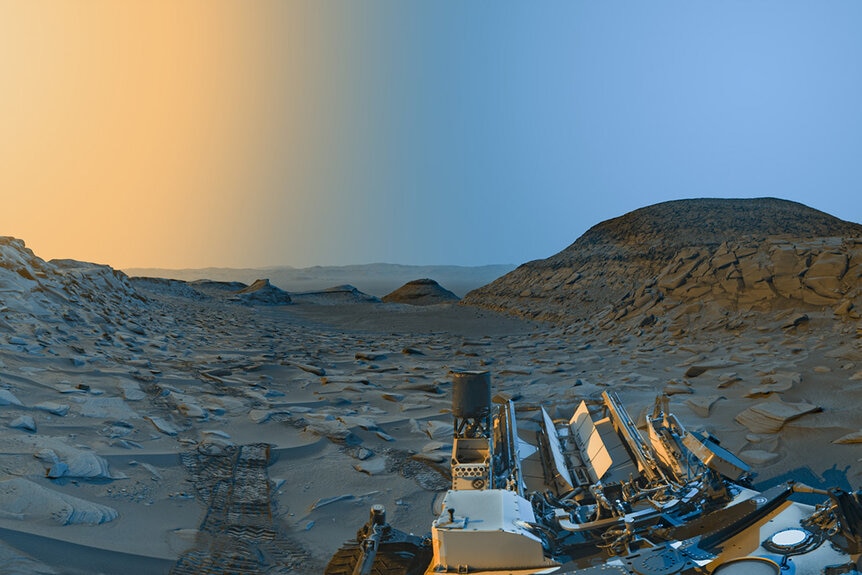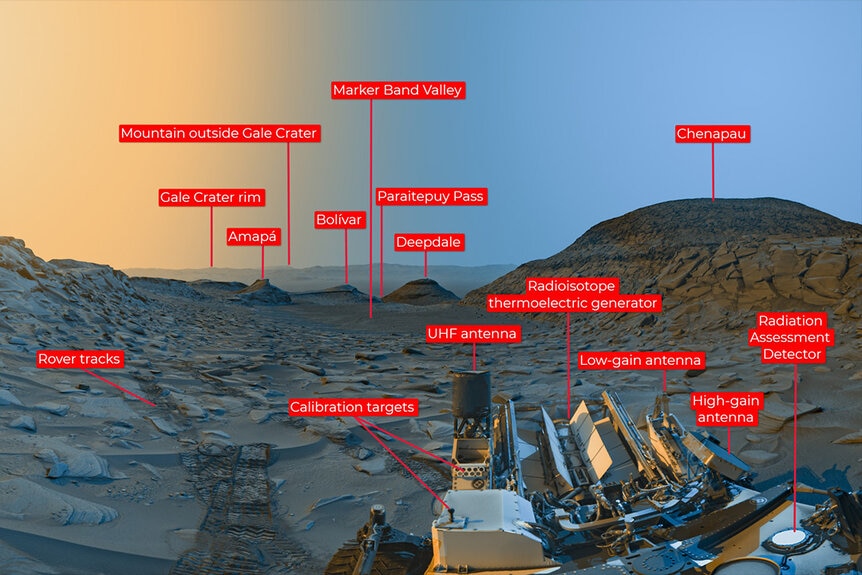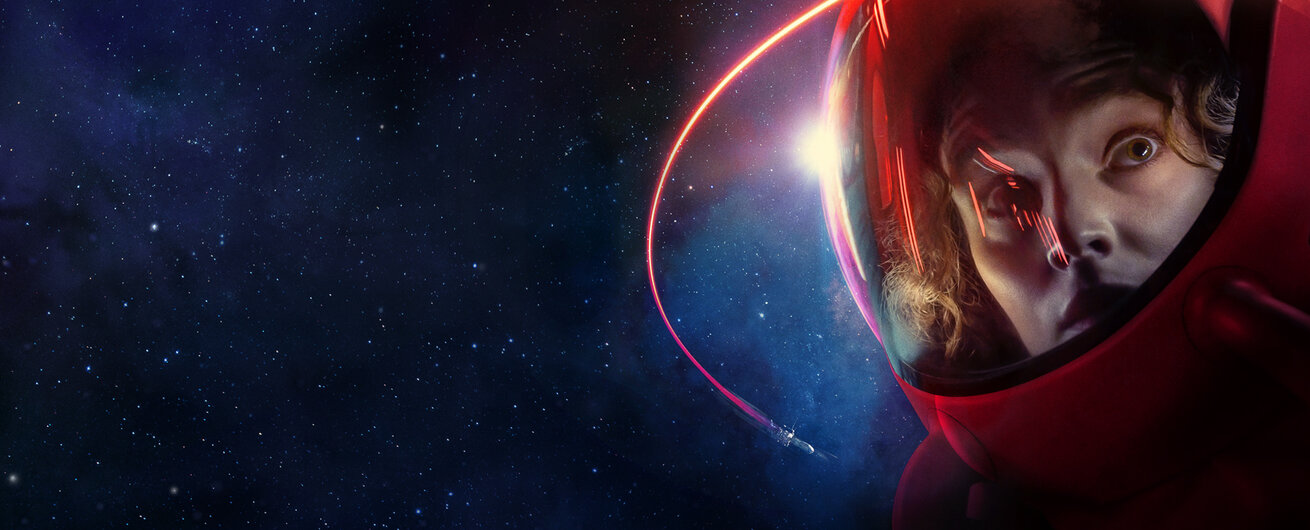Create a free profile to get unlimited access to exclusive videos, sweepstakes, and more!
NASA's Curiosity Rover Sends a Martian Postcard
Wish you were here!
Most of us have at least some desire to travel, to leap aboard a boat, airplane, or spaceship and set out for parts unknown. Those desires might be motivated by a desire to leave home, to learn about other cultures and places, or just to experience what the world has to offer. In SYFY’s The Ark (streaming now on Peacock), the brave explorers who set out for Proxima centuari do it because they’ll die if they stay on Earth. Of course, there’s no guarantee of survival on the Ark One either.
As much as we want to explore the cosmos, we’re not sure that being forced from your home under pain of death is ideal. We might be persuaded into a beach vacation on Mars, however. The views are pretty nice, judging from a recent image snapped by the Curiosity rover.
NASA's Curiosity Rover Photographs Mars' Gale Crater
Curiosity has been sniffing around the three-mile-high Mount Sharp, inside of Mars' Gale Crater. It’s been in the area since it landed in 2012. After a recent software update, Curiosity paused to snap a gorgeous scenic photo of the nearby Marker Band Valley, before moving on to the next part of its mission. Astronomers used the rover’s black and white navigation cameras to take a panoramic image of the landscape. They captured light at two different times of day, at 9:20 a.m. and 3:40 p.m., April 8, 2023, local Mars time.
RELATED: Artificial Photosynthesis Could Help Astronauts Breathe on Mars
The resulting image is a composite of the light gathered from both times of day. Changes in the Sun’s movement as the Martian morning of April 8 drifted into afternoon, give Curiosity’s postcard a dual shadow effect, allowing details to be more fully revealed. The image was proposed by Doug Ellison, a Curiosity engineer at NASA’s Jet Propulsion Laboratory (JPL), who suggested and processed the image. The image was also colored artificially, with a blue hue added to parts of the image captured in the morning and yellow added to portions captured in the afternoon.
“Anyone who’s been to a national park knows the scene looks different in the morning than it does in the afternoon. Capturing two times of day provides dark shadows because the lighting is coming in from the left and the right, like you might have on a stage – but instead of stage lights, we’re relying on the Sun,” Ellison said, in a statement.
RELATED: Mars Curiosity Sends Back One Giant Martian Panorama…And (Maybe) A Clue Of Past Life
The image shows a vast alien landscape fading away toward the horizon. In the middle distance of the image are three hills. Amapà and Deepdale flank the left and right, respectively, with Bolìvar nestled between. Curiosity cut a path between Bolìvar and Deepdale on the way to its current location. In the foreground, you can see the rover’s tracks leading back toward the hills. Nestled between the distant hills and the rough terrain of the foreground is Marker Band Valley, a sulfate-bearing region where Curiosity found signs of an ancient lake.
Curiosity’s backside also makes an appearance, revealing, from left to right, the rover’s UHF antenna, radioisotope thermoelectric generator (RTG), low-gain antenna, high-gain antenna, and radiation assessment detector (RAD). That last instrument will be important when we do muster up the gumption to head to the Red Planet ourselves. Using the RAD instrument, Curiosity is assessing levels of radiation exposure on the Martian surface and investigating ways to protect human explorers from it.
One of these days we really should visit. In the meantime, catch the entire first season of The Ark, streaming now on Peacock!
























